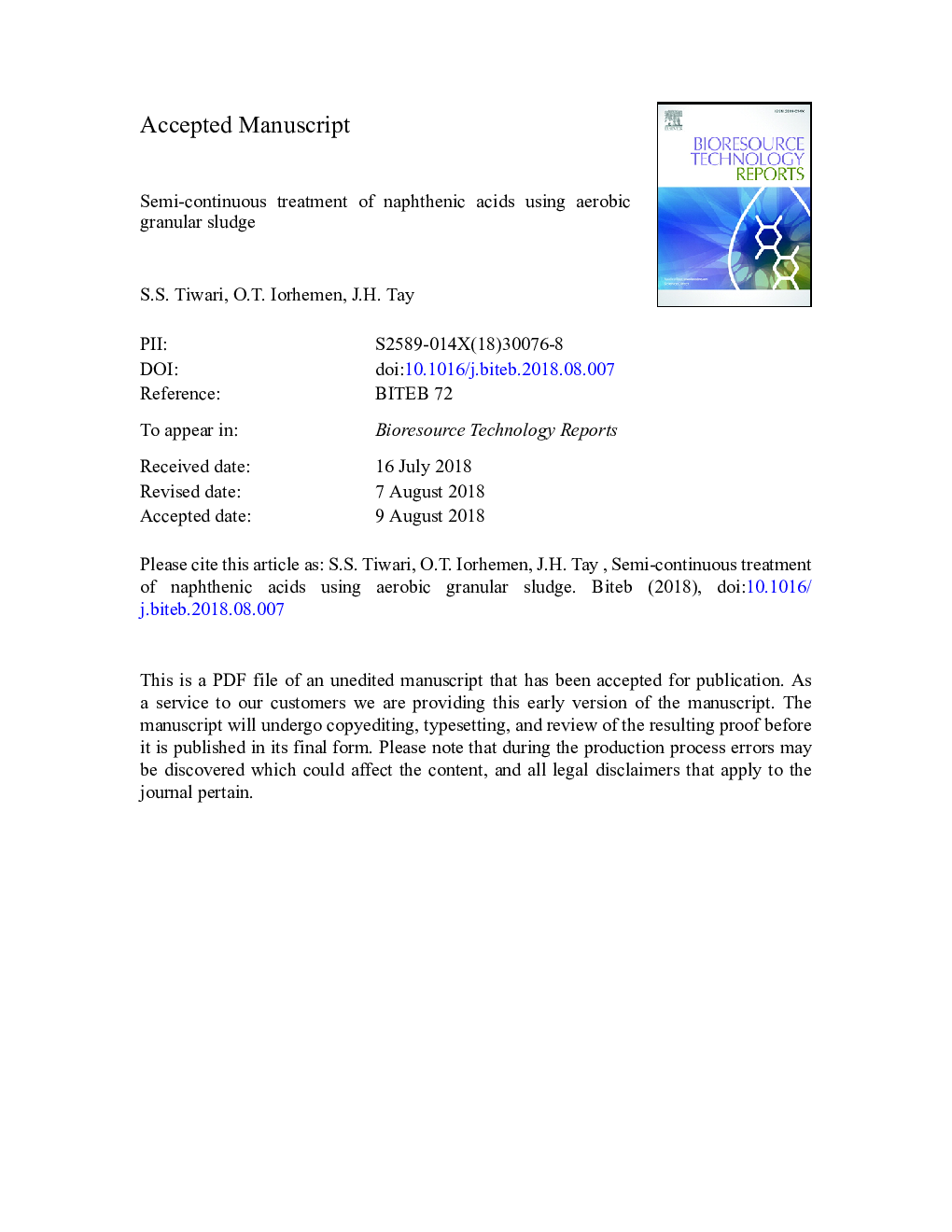| Article ID | Journal | Published Year | Pages | File Type |
|---|---|---|---|---|
| 10999740 | Bioresource Technology Reports | 2018 | 19 Pages |
Abstract
Process-affected water from the Canadian oil sands industry contains long chain cycloalkane carboxylic acids called naphthenic acids (NAs). The present proof-of-concept study aimed at assessing the shock response and treatability of commercial NAs using aerobic granular sludge (AGS) over 21â¯days. Mature aerobic granules were cultivated in a 5â¯L sequencing batch reactor (SBR) using synthetic acetate-based wastewater, and subjected to the NA mixture in three stages with varying organic loading rates. The introduction, starvation and the monitoring phases each had COD (chemical oxygen demand) removal efficiencies of 54.8%, 23.9% and 96.1%, and NA removal efficiencies of 71.8%, 43.3% and 67.0%, respectively. AGS biomass concentrations requiring higher COD consumption, and AGS surface area facilitating biodegradation and biosorption produced high specific removal rates. Specific COD removal rates ranged between 2678 and 6864â¯gâ¯COD/m3/d, whereas specific NA removal rates ranged between 0.5 and 12.2â¯gâ¯NA/m3/d. Supplemental nutrients were also degraded with over 90% removal efficiencies.
Keywords
DCMOil sands process-affected water (OSPW)AEOSBRMBBROSPWgas chromatograph–mass spectrometerNASBSTFAAGSMLVSSPBSMLSSAcid extractable organicsHRTEPSOLRMBRSVIGC–MSNaphthenic acidsMembrane bioreactorchemical oxygen demandIndustrial wastewater treatmentDichloromethaneSequencing batch reactorhydraulic retention timeSludge volume indexPhosphate buffered salineAerobic granular sludgeOil sands process-affected watermixed liquor suspended solidsmixed liquor volatile suspended solidsExtracellular polymeric substancesOrganic loading rateMolecular weightCod
Related Topics
Physical Sciences and Engineering
Chemical Engineering
Bioengineering
Authors
S.S. Tiwari, O.T. Iorhemen, J.H. Tay,
